1-Ethynylcyclopentanol
Modify Date: 2025-08-25 15:49:25

1-Ethynylcyclopentanol structure
|
Common Name | 1-Ethynylcyclopentanol | ||
|---|---|---|---|---|
| CAS Number | 17356-19-3 | Molecular Weight | 110.15400 | |
| Density | 0.962 g/mL at 25 °C(lit.) | Boiling Point | 156-159 °C(lit.) | |
| Molecular Formula | C7H10O | Melting Point | 27 °C | |
| MSDS | N/A | Flash Point | 120 °F | |
| Name | 1-Ethynylcyclopentanol |
|---|---|
| Synonym | More Synonyms |
| Density | 0.962 g/mL at 25 °C(lit.) |
|---|---|
| Boiling Point | 156-159 °C(lit.) |
| Melting Point | 27 °C |
| Molecular Formula | C7H10O |
| Molecular Weight | 110.15400 |
| Flash Point | 120 °F |
| Exact Mass | 110.07300 |
| PSA | 20.23000 |
| LogP | 0.92470 |
| Vapour Pressure | 1.1mmHg at 25°C |
| Index of Refraction | n20/D 1.474(lit.) |
| InChIKey | LQMDOONLLAJAPZ-UHFFFAOYSA-N |
| SMILES | C#CC1(O)CCCC1 |
| Storage condition | Flammables area |
Synonym: Section 2 - COMPOSITION, INFORMATION ON INGREDIENTS
Risk Phrases: 10 22 36/37/38 Section 3 - HAZARDS IDENTIFICATION EMERGENCY OVERVIEW
Flammable. Harmful if swallowed. Irritating to eyes, respiratory system and skin.Harmful.Flammable liquid. Potential Health Effects Eye: Causes eye irritation. Lachrymator (substance which increases the flow of tears). Lachrymator (substance which increases the flow of tears). Skin: Causes skin irritation. Ingestion: Harmful if swallowed. May cause severe gastrointestinal tract irritation with nausea, vomiting and possible burns. Inhalation: Causes respiratory tract irritation. May cause abdominal pain, nausea, vomiting, and inflammation of the gums and mouth. May cause chemical bronchitis with coughing and difficulty in breathing. Chronic: Not available. Section 4 - FIRST AID MEASURES Eyes: Immediately flush eyes with plenty of water for at least 15 minutes, occasionally lifting the upper and lower eyelids. Get medical aid immediately. Skin: Get medical aid. Flush skin with plenty of water for at least 15 minutes while removing contaminated clothing and shoes. Ingestion: Get medical aid. Wash mouth out with water. Inhalation: Get medical aid immediately. Remove from exposure and move to fresh air immediately. Notes to Physician: Section 5 - FIRE FIGHTING MEASURES General Information: As in any fire, wear a self-contained breathing apparatus in pressure-demand, MSHA/NIOSH (approved or equivalent), and full protective gear. Extinguishing Media: Use water spray, dry chemical, carbon dioxide, or chemical foam. Section 6 - ACCIDENTAL RELEASE MEASURES General Information: Use proper personal protective equipment as indicated in Section 8. Spills/Leaks: Absorb spill with inert material (e.g. vermiculite, sand or earth), then place in suitable container. Section 7 - HANDLING and STORAGE Handling: Use spark-proof tools and explosion proof equipment. Do not breathe dust, vapor, mist, or gas. Do not get in eyes, on skin, or on clothing. Storage: Keep away from heat, sparks, and flame. Keep away from sources of ignition. Store in a cool, dry place. Store in a tightly closed container. Flammables-area. Section 8 - EXPOSURE CONTROLS, PERSONAL PROTECTION Engineering Controls: Facilities storing or utilizing this material should be equipped with an eyewash facility and a safety shower. Exposure Limits CAS# 17356-19-3: Personal Protective Equipment Eyes: Wear chemical splash goggles. Skin: Wear appropriate protective gloves to prevent skin exposure. Clothing: Wear appropriate protective clothing to minimize contact with skin. Respirators: Follow the OSHA respirator regulations found in 29 CFR 1910.134 or European Standard EN 149. Use a NIOSH/MSHA or European Standard EN 149 approved respirator if exposure limits are exceeded or if irritation or other symptoms are experienced. Section 9 - PHYSICAL AND CHEMICAL PROPERTIES Physical State: Liquid Color: colorless Odor: Not available. pH: Not available. Vapor Pressure: Not available. Viscosity: Not available. Boiling Point: 156 - 159 deg C @ 760.00mm Hg Freezing/Melting Point: 27 deg C Autoignition Temperature: Not available. Flash Point: 48 deg C ( 118.40 deg F) Explosion Limits, lower: Not available. Explosion Limits, upper: Not available. Decomposition Temperature: Solubility in water: Specific Gravity/Density: .9620g/cm3 Molecular Formula: C7H10O Molecular Weight: 110.16 Section 10 - STABILITY AND REACTIVITY Chemical Stability: Not available. Conditions to Avoid: Not available. Incompatibilities with Other Materials: Strong acids - strong oxidizing agents - acid chlorides - strong reducing agents - acid anhydrides. Hazardous Decomposition Products: Carbon monoxide, carbon dioxide. Hazardous Polymerization: Has not been reported. Section 11 - TOXICOLOGICAL INFORMATION RTECS#: CAS# 17356-19-3 unlisted. LD50/LC50: Not available. Carcinogenicity: 1-Ethynylcyclopentanol, 98% - Not listed by ACGIH, IARC, or NTP. Section 12 - ECOLOGICAL INFORMATION Section 13 - DISPOSAL CONSIDERATIONS Dispose of in a manner consistent with federal, state, and local regulations. Section 14 - TRANSPORT INFORMATION IATA Shipping Name: ALCOHOLS, FLAMMABLE, TOXIC, N.O.S.* Hazard Class: 3 (6.1) UN Number: 1986 Packing Group: III IMO Shipping Name: ALCOHOLS, TOXIC, N.O.S. Hazard Class: 3.3 (6.1) UN Number: 1986 Packing Group: III RID/ADR Shipping Name: ALCOHOLS, FLAMMABLE, TOXIC, N.O.S. Hazard Class: 3 UN Number: 1986 Packing group: III Section 15 - REGULATORY INFORMATION European/International Regulations European Labeling in Accordance with EC Directives Hazard Symbols: XN Risk Phrases: R 10 Flammable. R 22 Harmful if swallowed. R 36/37/38 Irritating to eyes, respiratory system and skin. Safety Phrases: S 16 Keep away from sources of ignition - No smoking. S 26 In case of contact with eyes, rinse immediately with plenty of water and seek medical advice. S 37/39 Wear suitable gloves and eye/face protection. WGK (Water Danger/Protection) CAS# 17356-19-3: No information available. Canada CAS# 17356-19-3 is listed on Canada's NDSL List. CAS# 17356-19-3 is not listed on Canada's Ingredient Disclosure List. US FEDERAL TSCA CAS# 17356-19-3 is listed on the TSCA inventory. SECTION 16 - ADDITIONAL INFORMATION N/A |
| Hazard Codes | Xn:Harmful; |
|---|---|
| Risk Phrases | R10;R22;R36/37 |
| Safety Phrases | S16-S26-S27-S36/37/39 |
| RIDADR | UN 1986 3/PG 3 |
| WGK Germany | 3 |
| Packaging Group | III |
| Hazard Class | 3 |
| HS Code | 2906199090 |
| Precursor 9 | |
|---|---|
| DownStream 9 | |
| HS Code | 2906199090 |
|---|---|
| Summary | 2906199090. cyclanic, cyclenic or cyclotherpenic alcohols. VAT:17.0%. Tax rebate rate:13.0%. . MFN tariff:5.5%. General tariff:30.0% |
| EINECS 241-385-7 |
| 1-ethynylcyclopentan-1-ol |
| MFCD00001365 |
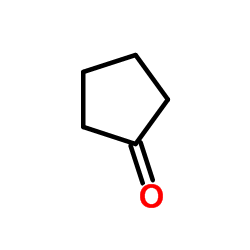 CAS#:120-92-3
CAS#:120-92-3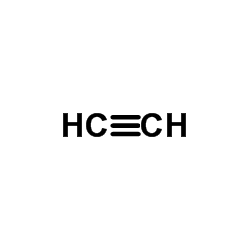 CAS#:74-86-2
CAS#:74-86-2![1-[2-(Trimethylsilyl)ethynyl]cyclopentan-1-ol Structure](https://image.chemsrc.com/caspic/123/71321-24-9.png) CAS#:71321-24-9
CAS#:71321-24-9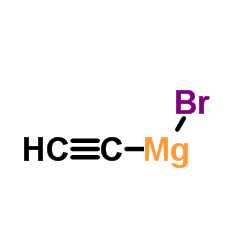 CAS#:4301-14-8
CAS#:4301-14-8 CAS#:1066-26-8
CAS#:1066-26-8 CAS#:4301-15-9
CAS#:4301-15-9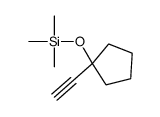 CAS#:62785-89-1
CAS#:62785-89-1 CAS#:70277-75-7
CAS#:70277-75-7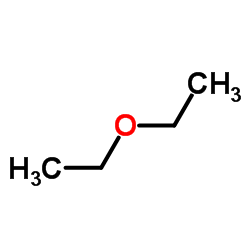 CAS#:60-29-7
CAS#:60-29-7![spiro[6,6a-dihydro-1H-cyclopenta[c]furan-3,1'-cyclopentane]-5-one structure](https://image.chemsrc.com/caspic/200/104728-36-1.png) CAS#:104728-36-1
CAS#:104728-36-1 CAS#:1903-27-1
CAS#:1903-27-1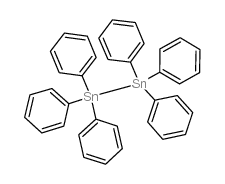 CAS#:1064-10-4
CAS#:1064-10-4 CAS#:28638-58-6
CAS#:28638-58-6 CAS#:130146-28-0
CAS#:130146-28-0 CAS#:1528-30-9
CAS#:1528-30-9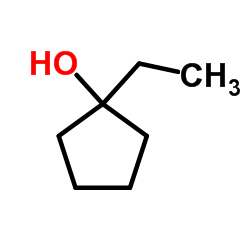 CAS#:1462-96-0
CAS#:1462-96-0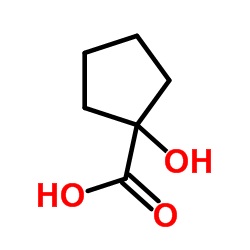 CAS#:16841-19-3
CAS#:16841-19-3 CAS#:17160-89-3
CAS#:17160-89-3
